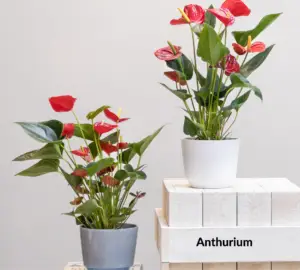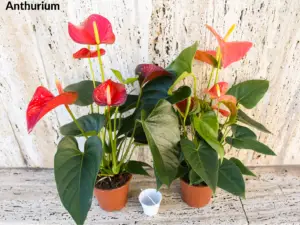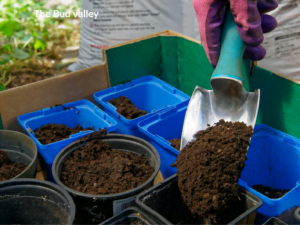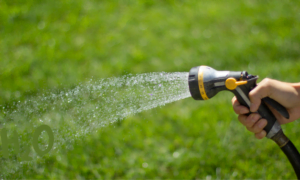
Every day, people bring various plants into their homes to enhance beauty and create a refreshing atmosphere. In 2017, I decided to plant an Anthurium tree at home, despite my limited knowledge about it at the time. Although I initially struggled and the tree didn’t survive due to some mistakes, I was determined to learn from this experience. I researched extensively to understand how to properly cultivate and care for Anthuriums. Armed with newfound knowledge, I resumed planting Anthuriums and have since successfully nurtured them without any issues. Drawing from my experience spanning from 2017 to the present day, I aim to provide detailed insights about this plant in today’s blog. If you’re considering bringing this plant into your home, I’ll guide you through each step, ensuring you have all the necessary information for successful cultivation. With proper care and attention, you can undoubtedly cultivate this plant successfully.
| Common Name | Anthurium, tailflower, flamingo flower, laceleaf Anthurium spp. |
| Botanical Name | Anthurium spp. |
| Family | Araceae |
| Plant Type | Herbaceous, perennial |
| Mature Size | 12-18 in. tall, 9- to 12-inch wide |
| Sun Exposure | Partial |
| Soil Type | Well-drained |
| Soil pH | Acidic |
| Bloom Time | Spring, summer, fall, winter |
| Flower Color | Red, pink, white |
| Hardiness Zones | 11-12 (USDA) |
| Native Area | Central America, South America, Caribbean |
| Toxicity | Toxic to humans and pets |
About 1,000 perennial plants native to Central America, North and South America, and the Caribbean make up the genus Anthurium. Although it can handle indirect light, this plant cannot tolerate or grow in full sunshine.
Anthurium Care Home

I’ll guide you step-by-step on how to care for this plant, but before that, here’s a brief overview of what you should know first. Choose a well-draining pot with a 50-50 blend of orchid and houseplant potting media. This will greatly benefit your plants. Regular watering, fertilizing, and pruning will also be very helpful for the plants.
Light

No plant can survive for long without sunlight. However, not all plants can tolerate direct sunlight, and Anthuriums are among those that cannot. Provide indirect sunlight for them, as prolonged exposure to direct sunlight can burn the leaves and harm the plant. Therefore, you should never place it in direct sunlight.
Soil

Eighty percent of a plant’s food and nutrients come from the soil, so it’s crucial to select soil that provides the necessary nutrients for its growth. The mixture I use includes sand and peat moss added to the orchid mix for well-drained soil, which proves highly beneficial for the plant.
Water

Watering is essential for plants; without it, no plant can survive for long. This plant requires water, but there are guidelines for watering it: it should never be overwatered, and water should be provided only when the soil is dry. You can water this plant once a week, and before watering, you must check if the topsoil of the plant is dry up to one inch. If the soil is dry, then you have to water the plant. You can water the plants outside the house 2-3 times a week.
Fertilizer

Fertilizing the plant is beneficial as it promotes normal growth and ensures the plant receives adequate nutrients for flowering at the right time. Similarly, the Anthurium plant benefits from phosphorus fertilizer, which stimulates flowering. It’s advisable to apply liquid phosphorus fertilizer to this plant once a week. However, be careful—overfertilizing can harm the plant.
Pruning

Pruning is very important because many dead leaves and stems can remain on the plant, hindering normal growth and spoiling its beauty. Therefore, when you notice dying leaves, you must prune them. However, be careful not to over-prune. You can prune for shaping once or twice a year. Pruning should be done with sharp and clean scissors to avoid damaging the plant. Additionally, you can prune extra-long stems and any branches growing at odd angles. Always ensure that at least three to four leaves are left on the plant. I’ve been practicing this for a long time with my plants.
Overwintering
Overwintering poses a significant risk to this plant. If you have it outdoors, bring it inside when temperatures drop below 60 degrees F. Place it in a protected, well-lit area with high humidity and maintain temperatures around 75 degrees F to ensure the plant survives.
Temperature and Humidity


Weather or temperature is crucial for this plant, as it thrives in high humidity and temperatures ranging between 65°F and 85°F. It can be cultivated outdoors in zones 11 to 12. Temperatures below 60°F can cause damage, and if it drops below 40°F, the plant may not survive.
Types of Anthurium
Anthurium andraeanum is characterized by its bright red, pink, or white spathes and glossy green leaves. Anthurium clarinervium stands out with its dark green, heart-shaped leaves adorned with white veins, making it an attractive addition to any indoor space. Anthurium regale, though less common, features large, fuzzy leaves that can grow up to one meter, appealing to enthusiasts seeking unique species.
Propagating Anthurium
Propagation by division entails dividing the entire plant into sections with attached roots. Ensure that each division retains some developing tissues attached to its roots to enhance its chances of successful growth. Propagation by seeds involves collecting seeds from mature berries and planting them in soil mixed with a moist, well-draining mixture. It could take longer for seeds to sprout and take root.
Common Pests

Aphids are small insects that attack the undersides of leaves, sucking sap from them. To get rid of them, spray the leaves with insecticidal soap or neem oil.
Spider mites thrive in dry conditions and create a web-like appearance on plants. To control them, use a miticide and maintain higher humidity levels.
How to Get Anthurium to Bloom
Here are some tips for caring for anthurium plants, based on my experience:
Provide Adequate Light:
Anthuriums thrive in bright, indirect light as they are tropical plants. Place your plant near a window where it receives filtered sunlight to encourage blooming.
Maintain Humidity:
Anthuriums require high humidity, which you can achieve by placing a humidifier near the plant or by regularly misting its leaves.
Regular Fertilization:
To promote flowering, feed your plant a balanced fertilizer with high phosphorus content. Fertilize every 4-6 weeks throughout the growing season to ensure optimal growth conditions.
Remember to be patient and attentive in caring for your anthuriums, as they require care and patience to bloom. Understanding their specific needs regarding light, humidity, fertilization, and addressing pests will help you enjoy the beauty of these exotic plants.
I have tried to write details about this tree from my personal experience. I hope that if you take care of your tree in the way I have mentioned, you can be 100% sure that your tree will grow properly and live for a long time.

